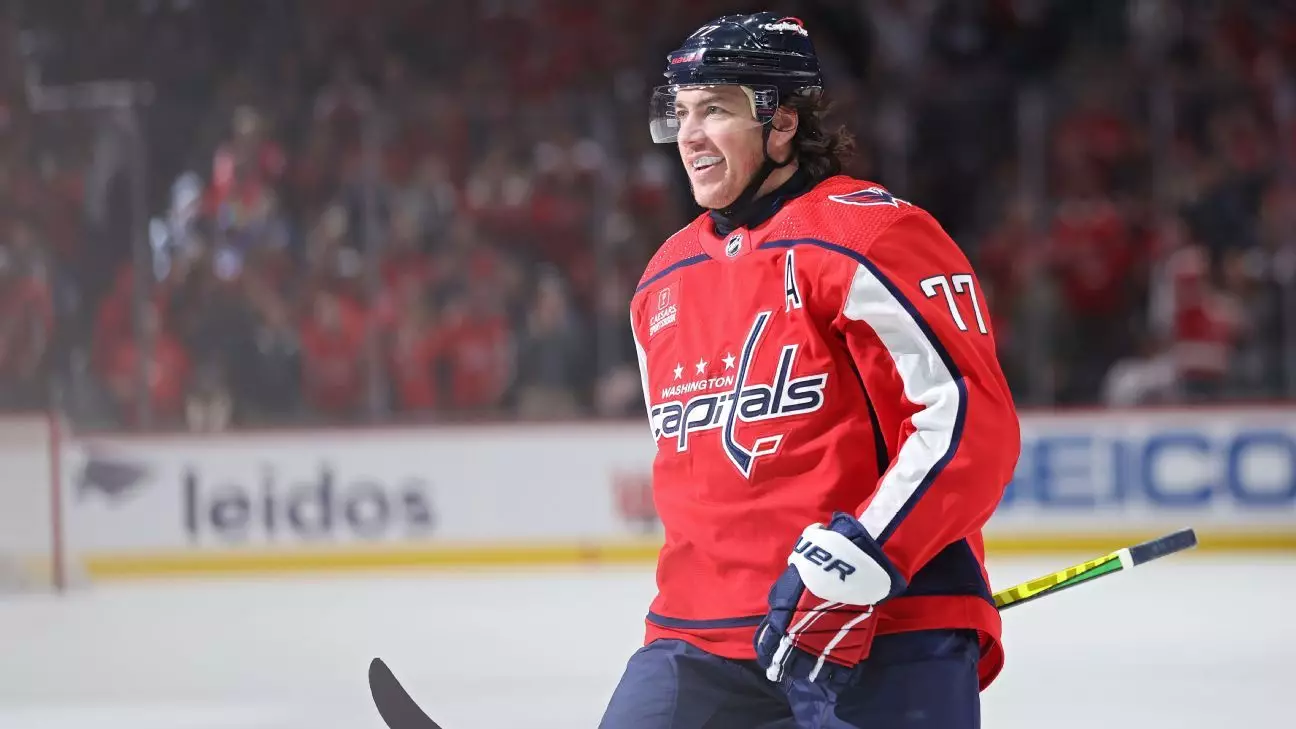The Washington Capitals’ announcement regarding T.J. Oshie’s placement on long-term injured reserve for the upcoming 2024-25 NHL season underscores a troubling reality for the veteran forward. This decision, made public on the first day of the Capitals’ training camp, stems from a worsening chronic back problem that has plagued Oshie for several years. Following a thorough medical evaluation, both the organization and Oshie recognized the growing severity of his condition, leading to this necessary but disheartening step away from on-ice competition.
Chronic injuries in professional sports are not new, but the extent to which they affect a player’s quality of life often remains under-discussed. Oshie’s case is a poignant reminder of the physical toll that elite-level competition can impose. The team, in an effort to support Oshie’s health and well-being, has chosen a path that prioritizes his long-term recovery over immediate competitive contributions. This decision reflects a larger trend in professional sports where the focus is shifting from mere participation to holistic athlete health.
The Impact of Injury on Performance
Oshie’s ongoing battle with injury has had drastic repercussions for his performance on the ice. Last season saw him limited to just 52 games, a stark contrast to his previous avid presence in the lineup. This decline in games played is telling, as he has not reached the 60-game threshold since the 2019-2020 season. Consequently, his offensive output has dwindled, culminating in a mere 25 points in the last season—far below the expectations for a player of his caliber.
This situation highlights a critical dilemma not just for Oshie as an individual athlete, but for the organization as well. The Capitals are in the midst of a youth movement, seeking to reshape their roster and infuse it with fresh talent. With veteran players potentially sidelined due to ongoing injuries, the pressure mounts for Washington to cultivate younger players who can step up and fill the gaps left by seasoned pros like Oshie.
A Personal Struggle Beyond the Game
Beyond the statistics and team performance, Oshie’s struggle with his condition is profoundly personal. He shared candid insights into the debilitating pain that his back issues have caused him, revealing that certain days leave him unable to perform even the most basic of tasks. This stark image portrays the severe impact that chronic pain can wield, often stretching far beyond the confines of the game. Oshie has described nights spent lying on the floor, reduced to using water bottles due to his inability to get to the bathroom—a situation that no athlete wishes to face, let alone someone with a family.
The emotional burden is compounded by his role as a father of four. The inability to engage fully in family life due to physical limitations is a heartbreaking aspect of his journey—an element that elicited empathy not only from fans but also from the broader sports community.
Amidst the grim realities of his situation, the Capitals have made it clear that Oshie will have their unwavering support as he navigates this challenging period. General Manager Chris Patrick’s statements reaffirm the organization’s commitment to treating Oshie as an invaluable member of the team—not just in athletic performance but in fostering a supportive working environment. This solidarity from the Capitals demonstrates an essential principle in professional sports: the importance of prioritizing athlete welfare.
Fan support also plays a critical role in this equation. As Oshie copes with the struggles ahead, the goodwill and encouragement from the Capitals’ fanbase can serve as a source of strength for him. The emotional connection between players and fans often transcends the ice, reflecting a community united in support of their athletes in both triumph and tribulation.
As Oshie expressed in his statements, hope remains alive within him for a potential return to the ice. Yet this hope is tempered by the reality that any comeback hinges on addressing the unresolved pain plaguing him. His desire to ensure that any future skating does not compromise his health or quality of life resonates with many athletes faced with similar crossroads.
With one year left on his contract and a cap hit of $5.75 million, Oshie’s next steps remain uncertain. His dedication to finding solutions, while simultaneously supporting his teams and family, will define his journey going forward. The coming months will demand not only physical resilience but also mental fortitude as he navigates this complex landscape of recovery, support, and the possibility of returning to the game he loves.


Leave a Reply